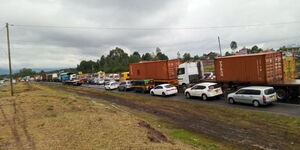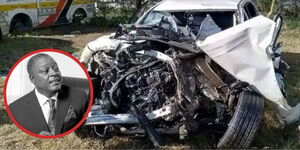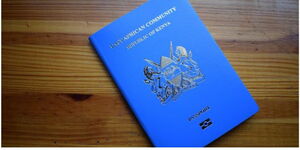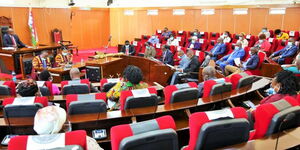The ongoing construction of the Nairobi Expressway has turned the Kenyan Capital into a grid-locked city with cars piling up for hours on end during rush hour.
Mombasa Road, Uhuru & Waiyaki Highways have been scenes of road carnage as motorists try to find new routes to save on time. Overlapping and consequently accidents have become a common feature.
On April 9, 2021, an announcement by the Kenya National Highways Authority (KENHA) regarding the closure of a section of Uhuru Highway for 21 days turned South B Estate into an alternative highway.
However, the road infrastructure meant to service the thousands living in the city estate simply couldn’t service the tens of thousands of motorists who use Mombasa Road each day.
This has led to huge traffic snarl-ups as most stuck to using Industrial Area, Jogoo Road, or South B as an alternative of getting to town.
At the start of June 2021, Cabinet Secretary Ministry of Transport James Macharia issued a directive to the contractors tasked with the construction of the 27.1km expressway cutting across the heart of the capital.
In a bid to mitigate the traffic nightmare, the contractor (China Road and Bridge Corporation (CRBC) was directed to provide alternative routes and seek out the police for aid in managing traffic congestion.
Notably, the CS also issued a memorandum to the Senate Committee on Roads explaining how the ongoing construction would inevitably lead to the temporary closure of businesses located along the corridor.
“We have instructed the contractor to minimize such disruptions and ensure that whenever access to a business is closed, construction is expedited,” reads an excerpt from the memo.
According to CS Macharia, the contractor is required to maintain at least two lanes for passage of traffic throughout the corridor.
However, several sections have been narrowed down to single lanes along the busy stretch of road, resulting in traffic jams that last for hours on end.
According to Ren Wenfeng – CRBC General Manager, the Ksh65 billion expressway which will serve as the main artery for the transportation of both goods and passengers will significantly alleviate traffic congestion in Nairobi.
This will in turn make traffic from Nairobi’s Central Business District (CBD) to the Jomo Kenyatta International Airport (JKIA) and its southern area more convenient and efficient.
“The project is expected to be completed in the first half of 2022. The Nairobi Expressway promises to offer beautiful scenery as you commute across the Green City in the sun, further enabling the process of modernization,” he detailed to the press.
In a bid to mitigate the impact on the current traffic in the city during the construction process, the CRBC General Manager revealed that they had adopted a construction process where they prefabricate piers and bent cap in the factory, and then transport them to the site for installation.
The adaptation is not only a first in Kenya but has seen the construction pace pick up as well.












